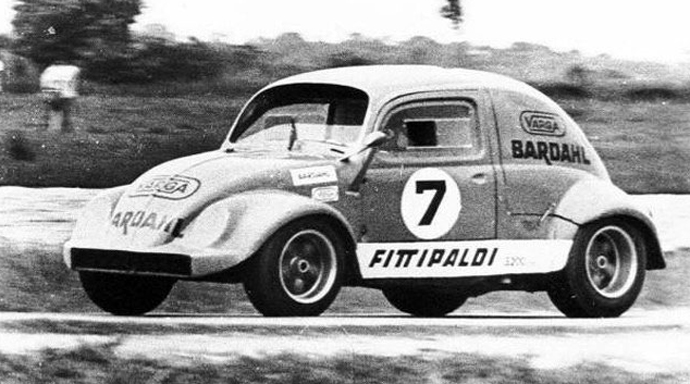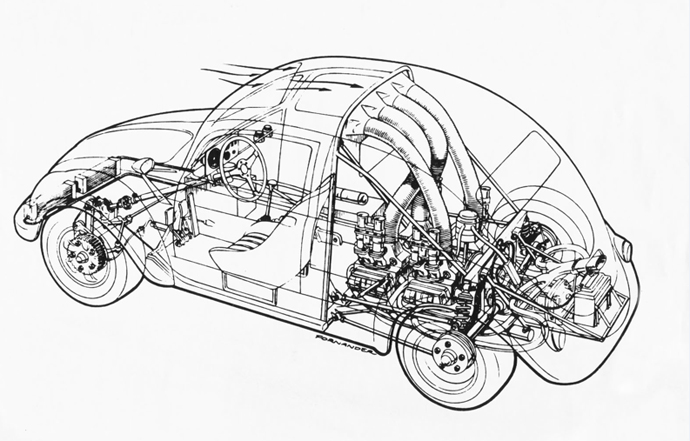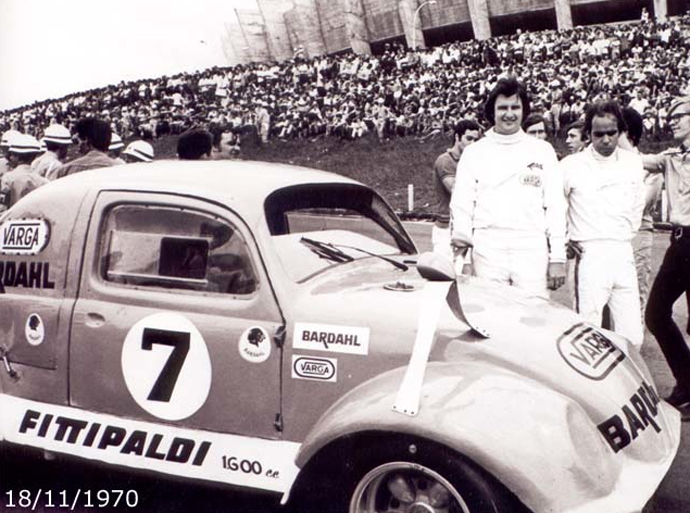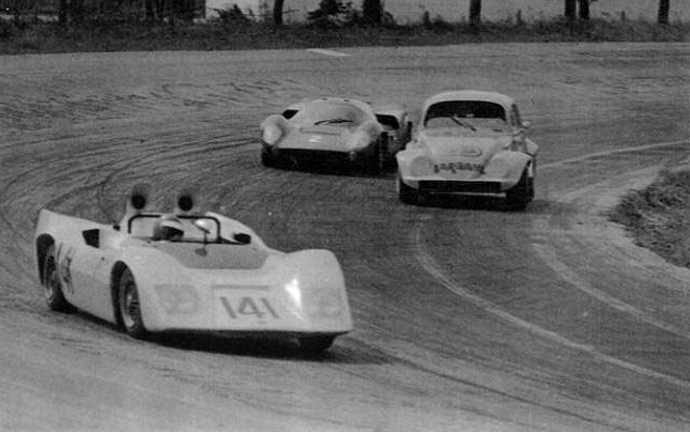When F1 legend Emerson Fittipaldi wanted a car that was tough enough to compete in a grueling 1000km race in his home country of Brazil, what vehicle would he choose? None other than a humble Beetle. The fact that it was fitted with not one but two engines explains why, against competition from much more prestigious sports cars, it was so successful. For a few laps at least…
Fittipaldi often breezed back from Europe, where he raced, to Brazil to avoid the cold, winter weather. And, frankly who could blame him. So on one such trip in 1969 he entered The 1000km Guanabara, an important endurance race at the time. The only problem was, he didn’t have a suitable set of wheels to do it in…
Given the fact that every other vehicle on the road was a Beetle in Brazil at that time and spares were plentiful, he came upon the totally insane idea of using a Beetle. Of course, when faced with competition from more auspicious rivals such as Ford GT40s, Lola T70s and Alfa Romeo T33s – he knew something pretty radical had to be done if he was to stand a cat in hell’s chance of winning. So, with the help of his older brother, Wilson, and top tuners Nelson Brizzi, Ari Leber, de Sena, Mediros and Richard Divila, a plan was quickly hatched…

No doubt the biggest dilemma with the Beetle was working out how to get more power from the puny 1300cc engine. Tuning kits and big bore conversions were available but that clearly wouldn’t be nearly enough to go head-to-head with those hairy-chested purpose-built, big horsepower race cars. Eventually the team came up with a novel idea: why make do with just one engine when you could use two!
Fitted with two fiddled with 1600c air-cooled engines producing a total of 260bhp, the reasonably lightweight Bug could match the power-to-weight ratio of the larger cars – a factor that would come in useful on the twisty Jacarepagua circuit in Rio de Jaenairo. The team devised a plan to make the two work in tandem using a rubber joint with the crankshafts connected, resulting in a 3.2-litre mid-mounted eight-cylinder engine. Eight exhaust pipes converged in a single outlet above a five-speed gearbox from a Porsche 550 Spyder. The Porsche also provided the drum brakes, steering column and front suspension.

As you might imagine, there was little left of the original Beetle by the time the car was ready to race. The back half featured a space frame construction, mounted to the remains of the original chassis.
Only a firewall separated the driver from the deafening racket just behind his head. Imagine the clattering roar of a highly-tuned air-cooled VW engine multiplied by two!
The rear suspension was a Formula Vee semi-swing axle affair with coil springs which resulted in pretty hairy handling, as Wilson Fittipaldi explained: “The car had tremendous torque and was built to go sideways through the corners, because that was the only way to set a good lap time with that car.”
The trickiest part was of the project was finding a way of keeping the engines cool and to that end two oil coolers were fitted inside the front bumper and the front windscreen was angled backwards more than normal, which left a gap between the top of the windscreen and the roof, thus creating an air-scoop. This channelled air over a false ceiling beneath the roof to flex hoses (which look very much like original VW corrugated piping) which fed cool air to the engine. The whole lot was covered by a thin fiberglass, Beetle-looking body and weighed just 407kg.

It’s thought Okrasa kits were eventually used to bore the displacement of each engine to 2.2-litre making a total of 4.4-litres, which, combined with new camshafts, a new crank and Weber carbs, meant the monster Bug was good for nearly 400bhp.

Incredibly it took less than eight weeks to prep the car and during practice laps for the race at the former Jacarepagua track, Fittipaldi clocked the third-fastest lap time despite the back section of the bodywork being blown off on one such run. Incredibly he the Bug qualified second, just behind Carlos Pace in an Alfa Romeo T33 V8.

During the race, to everyone’s disbelief, the madcap underdog held third place for the first lap, creeping into second position by lap 5 just behind Pace. It kept going until the gearbox finally let go forcing Fittipaldi to stop after less than an hour. Nevertheless, it was one hell of a debut and the project was massively optimistic. It raced once more in twin-engine format, but again broke down and failed to finish. The car was later sold, the second engine removed and was raced again but rumour has it that before this happened, Volkswagen got in contact with Fittipaldi and eight engineers looked over the vehicle to get a feel for how it was all screwed together. And work out how it had bested, albeit very briefly, such serious and far more exotic motor racing machinery.
Those were the days, eh…
Ian
The opinions expressed here are the personal opinions of the author and do not necessarily represent the views and opinions of VW Heritage


Do you think this is where the filmmakers got the inspiration for the Herbie Films?
A ridiculously fast Beetle, which blew the doors of anything that it came up against.
Could be! The Love Bug was released in 1969 – the same year as Fittipaldi’s race, so the film would certainly have been in the news a fair bit… and when you see the black and white pic of it on the track it’s difficult not to hum the Herbie tune!
The Love Bug was released in 1969, but was filmed in early 1968, so before the Fittipaldi car was even built. The Herbie films were inspired by a story written by Gordon Bufford. The racing aspect of it came from the SCCA racers back in the mid 60s, and you can see a lot of similarities in Herbie to the Nassau VW racers from the same time period.